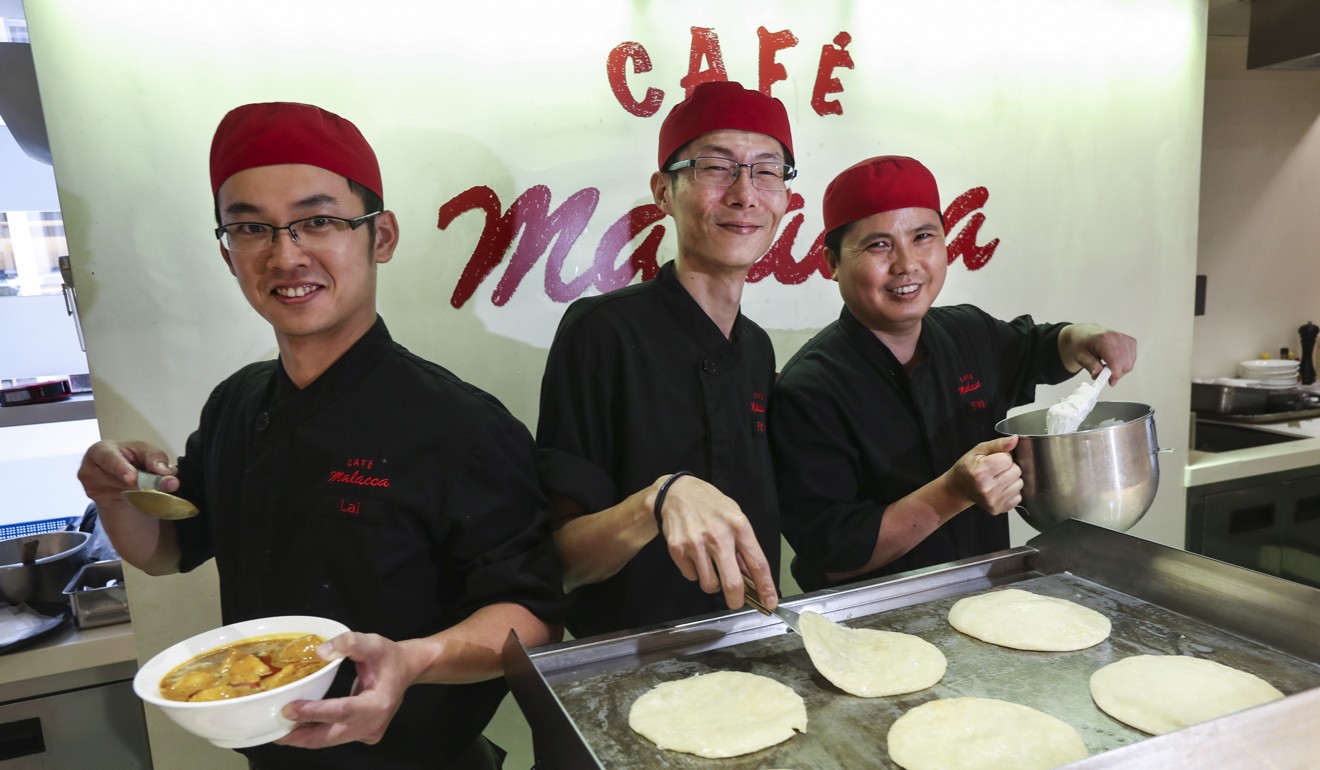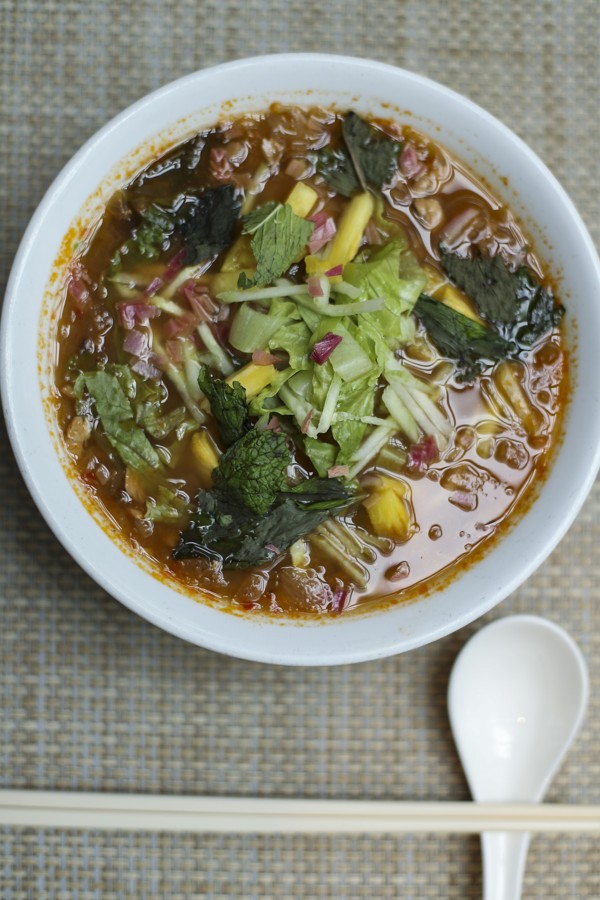
Café Malacca’s Mrs Poon keeps the tastes of Malaysia and Singapore real
Culinary director has gone to great lengths to ensure the hawker-style food she prepares tastes just the way it should
When you ask any Malaysian or Singaporean living in Hong Kong where their go-to restaurant in Hong Kong is when they crave nasi lamek, laksa, rendang and other dishes from their homeland, more often than not they say Café Malacca.
Café Malacca’s menu is filled with Singaporean and Malaysian favourites, such as Penang char koay teow, a stir-fried flat rice noodle dish with prawns, Chinese sausage, chives and bean sprouts, and mee goreng, spicy Indian-style fried yellow noodles with prawns, potatoes, bean curd topped with lettuce and crispy fried shallots with a wedge of lime.
Hotel Jen’s Malaysian-Singaporean hawker-food restaurant is as authentic as it gets in Hong Kong, and culinary director Poon Toh Suan Ee - or “Mrs Poon” to her regulars - has a lot to do with that.

“I made the chefs eat at as many stalls as possible, taking pictures to see what the dishes looked like and then, when we came back, I would give them the recipe and we would work on it until we achieved the authentic tastes of the dishes.”

“Like the Penang dish, char koay toew, in Hong Kong they serve the noodles thick and broad, whereas we serve the noodles narrow and thin, no more than 1cm wide, and we serve it with a duck’s egg.
“From the shape of the dishes to the size of cutting the noodles and vegetables, everything has to be authentic. For instance, with laksa, the cucumber has to be julienne [cut into long thin strips]; for satay it has to be wedged, so it was confusing for them at first. [But] I used a ruler and took pictures for them. Even today, when I want to make a new dish, I take a picture and use a ruler so everything is precise. I believe that before you eat the food it has to look right.”
Many diners may expect Nyonya cuisine at a restaurant named Café Malacca, but Poon says the restaurant serves popular hawker dishes from the cities on the Strait of Malacca - such as Singapore, Kuala Lumpur and Penang. “But we recently included dishes and ingredients from Ipoh; the town is famous for its hor fun and its bean sprouts,” says Poon, who was taught to cook by her grandmother, who made Nyonya cakes for special celebrations such as weddings.
I took the chefs over to Malaysia and Singapore... to teach and show them how the food should taste and how it should be plated
“I would go into the kitchen to help her. I had 12 aunts and uncles from that one grandma and they are all - except for two - good cooks. So I grew up with good food and they were actually very knowledgeable - so when I tweaked a dish, they would say, ‘Don’t do it, because it’s no longer authentic’.”
This is the reason why Poon sources ingredients from Singapore and Malaysia - so diners can experience the real thing.

“The difference is that the cuttlefish in Singapore is dried and then grilled and finally hammered into a crispy-like jerky, but in Penang the cuttlefish is actually boiled and it also has a lot of fruit, such as guava and other seasonal fruits, such as mango, green mango, star fruit and two types of guava. Then the Penang laksa has a fish base and is very healthy and the garnish is all raw, so it’s very herby and it goes with this prawn paste, which is totally black and may not look and smell appetising, but you have to put it in otherwise it doesn’t taste good. It’s made from fermented prawns - we call it shrimp paste. The dish is quite tart, but as soon as you put in the shrimp paste, it’s very smooth.”

After Poon married her Hong Kong-born husband she moved to Singapore, where she brought up her family. She stayed there, working in the food and theme-park industries, until she moved to New York in 2004. Poon finally came to Hong Kong in 2010.
“I feel my experience from science, business development, food and beverage - such as overseeing catering and cafeterias at the Singapore Hospital - and theme-park industries has all come together in what I am doing now at Café Malacca,” Poon says.

As we speak, a dish is brought over for her to sample for a forthcoming event she is organising. It won her approval.
“We are open all day,” Poon says. “I am thinking about a tea-time menu, featuring kaya toast - toasted bread with egg and coconut jam and butter. It’s a Malaysian favourite.”

